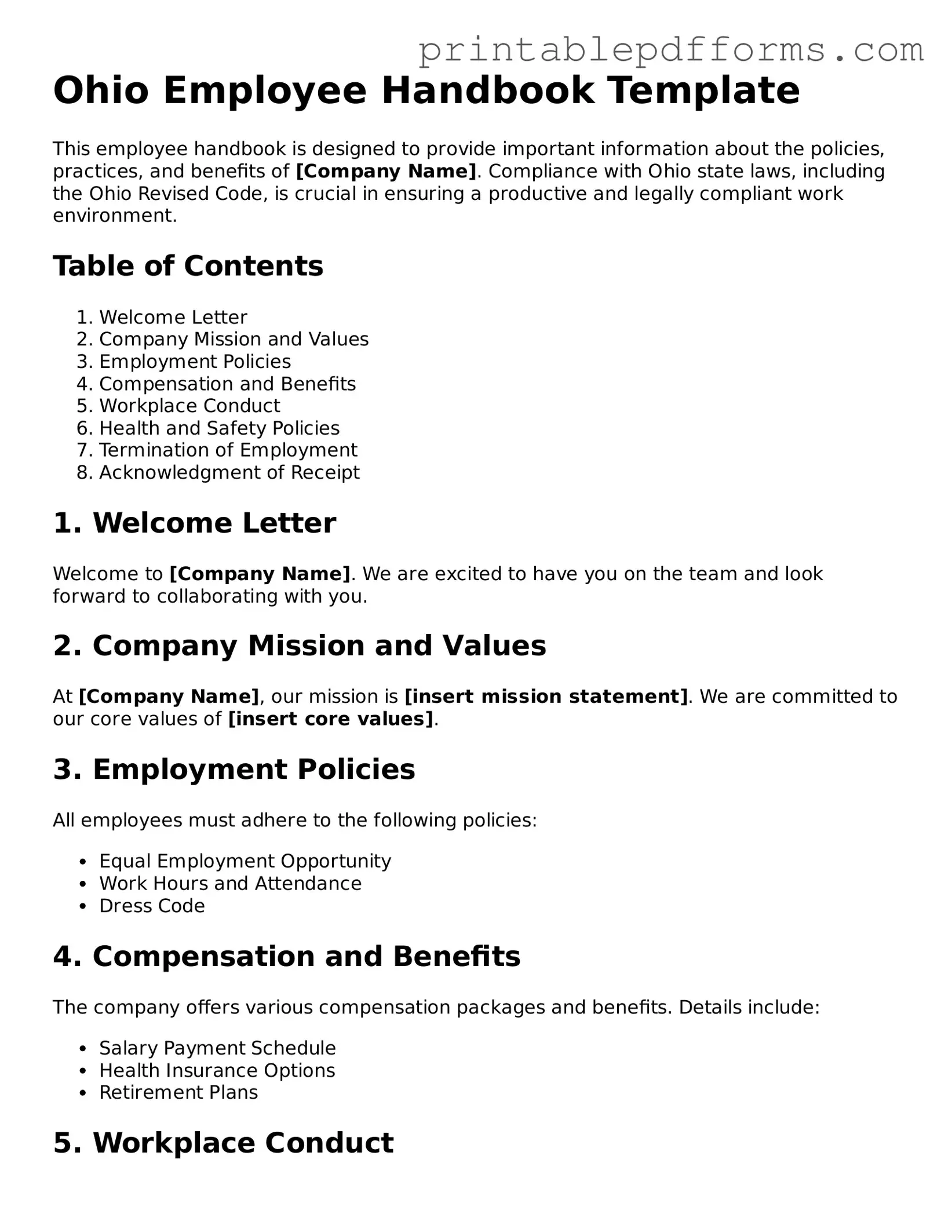Ohio Employee Handbook Template
This employee handbook is designed to provide important information about the policies, practices, and benefits of [Company Name]. Compliance with Ohio state laws, including the Ohio Revised Code, is crucial in ensuring a productive and legally compliant work environment.
Table of Contents
- Welcome Letter
- Company Mission and Values
- Employment Policies
- Compensation and Benefits
- Workplace Conduct
- Health and Safety Policies
- Termination of Employment
- Acknowledgment of Receipt
1. Welcome Letter
Welcome to [Company Name]. We are excited to have you on the team and look forward to collaborating with you.
2. Company Mission and Values
At [Company Name], our mission is [insert mission statement]. We are committed to our core values of [insert core values].
3. Employment Policies
All employees must adhere to the following policies:
- Equal Employment Opportunity
- Work Hours and Attendance
- Dress Code
4. Compensation and Benefits
The company offers various compensation packages and benefits. Details include:
- Salary Payment Schedule
- Health Insurance Options
- Retirement Plans
5. Workplace Conduct
Employees are expected to maintain a professional environment. Key expectations include:
- Respect for Colleagues
- Harassment-Free Workplace
- Confidentiality Agreements
6. Health and Safety Policies
Safety is a priority at [Company Name]. Adhere to the following health and safety guidelines:
- Report Unsafe Conditions
- Emergency Procedures
- Drug-Free Workplace Policy
7. Termination of Employment
Understanding the process of termination is essential. The following may take place:
- Notice Period
- Exit Interviews
- Final Paychecks
8. Acknowledgment of Receipt
Employees are required to sign the acknowledgment of receipt of this employee handbook upon review.
Date: ______________________
Employee Signature: ______________________
